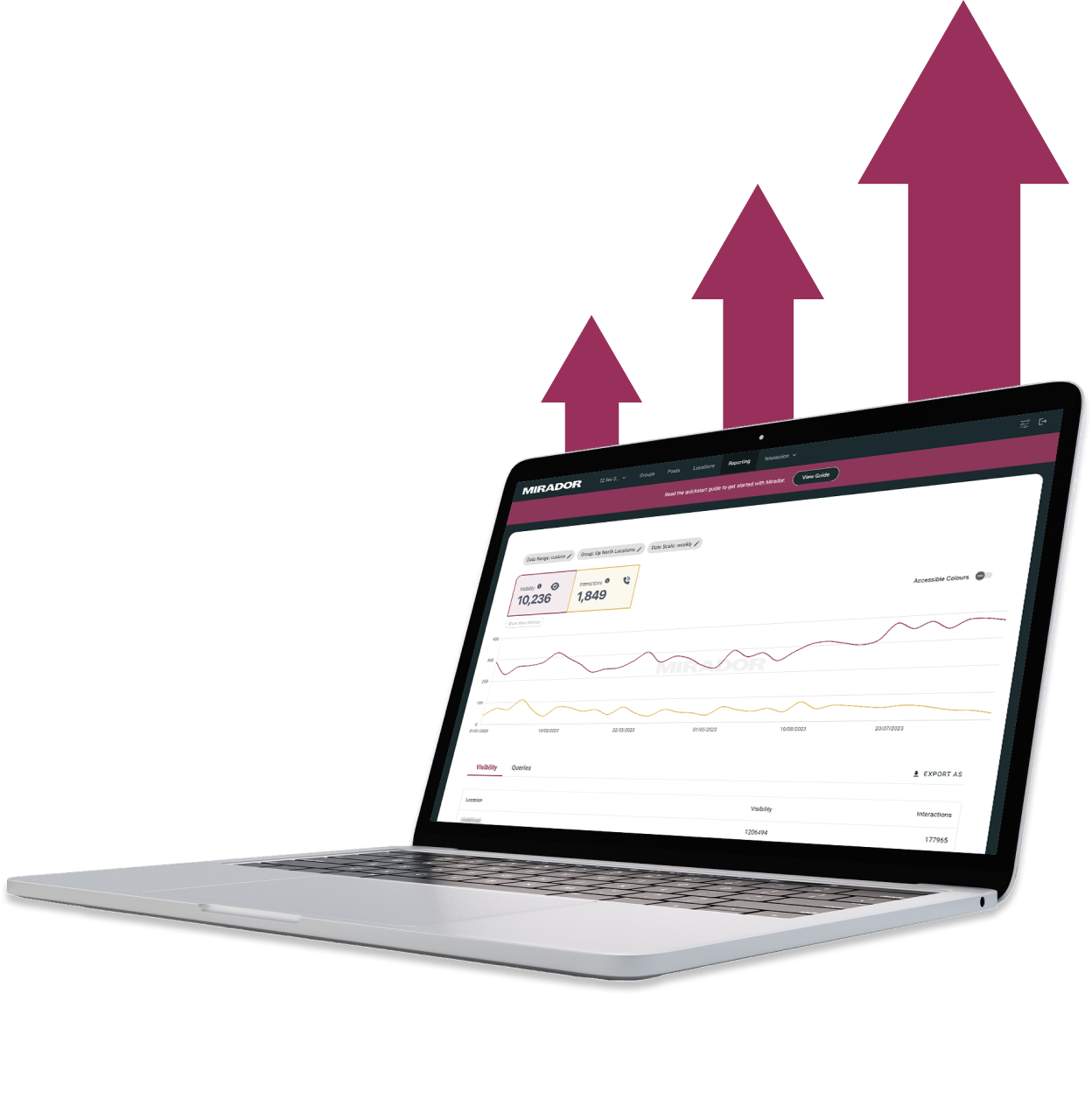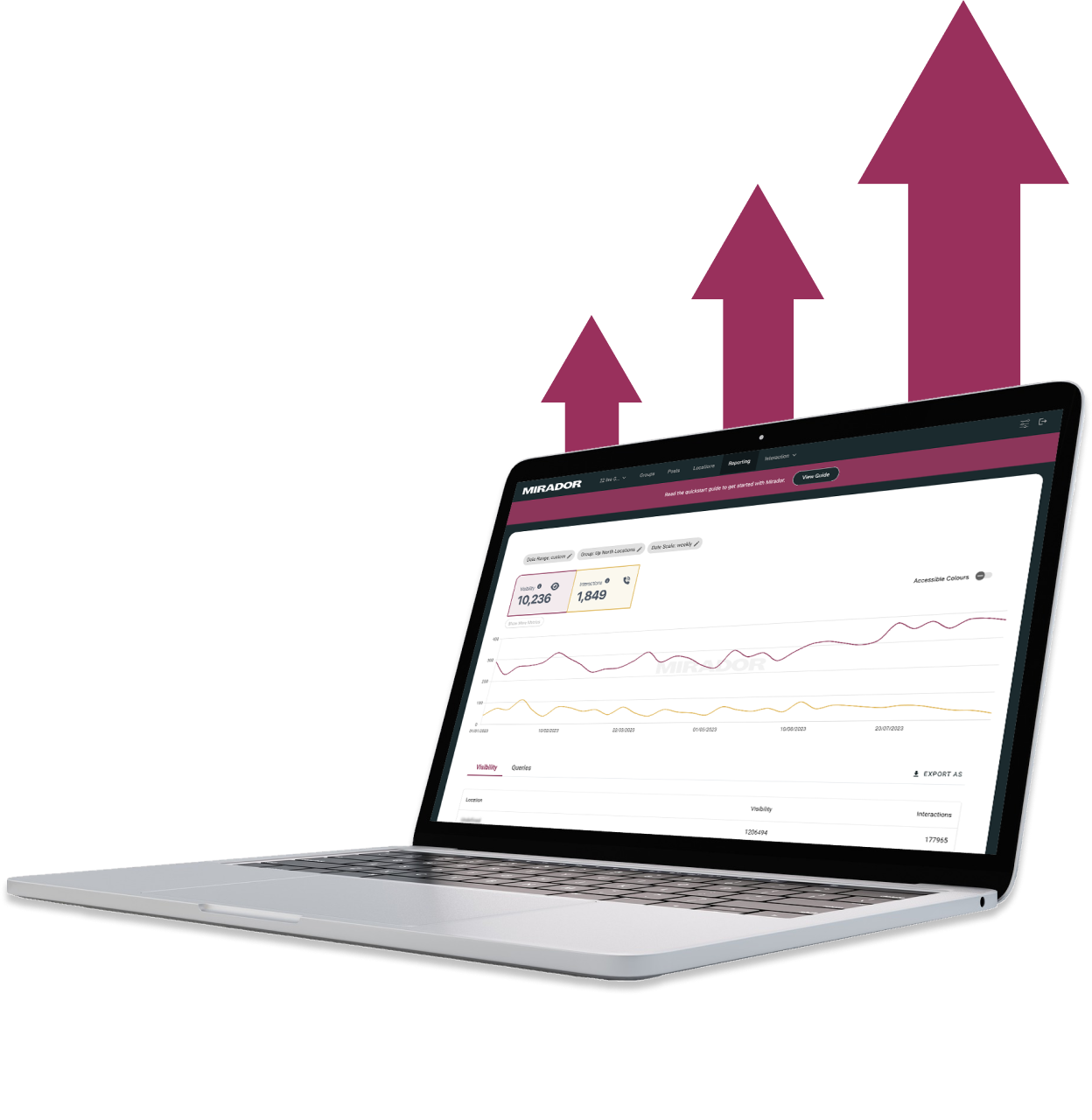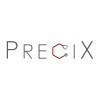Webflow vs. Framer: Pros and Cons
Webflow vs. Framer: Comparing the Pros and Cons
Understanding Webflow and Framer
Webflow and Framer are both design tools that are used to create interactive web designs. While these tools share some similarities, they have several key differences that set them apart.
Webflow is a visual editor that uses a code-free approach to help users create websites and e-commerce stores. With Webflow, users can create complex grid structures with multiple rows and columns, adjust the size and spacing of each grid element, and even add custom breakpoints to optimize the layout for different screen sizes. Webflow is great for quickly creating prototypes, and it doesn't require any knowledge of HTML/CSS.
On the other hand, Framer is a code-based environment that allows users to create complex animations and interactions. Framer is ideal for designers who are comfortable with coding and want to create advanced prototypes. With Framer, users can create animations that are not possible with other design tools. Framer also allows for truly collaborative work, where multiple people can work on a project at the same time.
When it comes to user interface design, both Webflow and Framer offer a range of design elements such as buttons, forms, and sliders. However, Webflow has a more user-friendly interface, making it easier for beginners to learn and use. Framer, on the other hand, requires a bit more technical knowledge, making it better suited for experienced designers.
In terms of pricing, both tools have different plans and pricing structures. Webflow offers a free plan with limited features, as well as paid plans that range from $12 to $35 per month. Framer offers a free trial, but the full version of the tool costs $15 per month.
Overall, both Webflow and Framer have their pros and cons, and it's important to consider which one best fits your needs. If you're looking for a user-friendly design tool that doesn't require coding knowledge, Webflow is a great option. If you're comfortable with coding and want to create advanced prototypes, Framer may be the better choice.
Designing with Webflow and Framer
Webflow and Framer are two popular design tools that offer different approaches to designing websites and web applications. While Webflow is a no-code platform that allows users to create responsive designs using a drag-and-drop interface, Framer is a code-based environment that enables designers to create complex animations and interactions with code.
One of the main advantages of Webflow is its ease of use. The platform offers a range of pre-built components that users can customize to create unique designs, without the need for any coding knowledge. It also provides a version history feature that allows users to track changes and revert to previous versions of their designs.
On the other hand, Framer provides designers with greater control over their designs, thanks to its code editor and support for JavaScript and React. This allows users to create advanced animations and interactive prototypes that are not possible with Webflow. However, this comes at the cost of a steeper learning curve, as designers need to have some coding knowledge to use the platform effectively.
When it comes to speed, Webflow offers a faster design workflow than Framer, as it eliminates the need for custom code. This makes it a great choice for designers who want to create prototypes quickly and efficiently. Framer, on the other hand, is better suited for designers who require more control over their designs and are willing to invest time in learning how to use the platform effectively.
In terms of features, both platforms offer a range of tools for creating responsive designs and customizing layouts. However, Webflow offers more pre-built components, while Framer provides greater flexibility through its support for custom code.
Overall, the choice between Webflow and Framer depends on the specific needs of the designer. Webflow is a great choice for designers who want to create responsive designs quickly and efficiently, while Framer is better suited for those who require greater control over their designs and are willing to invest time in learning how to use the platform effectively.
Learning Curve for Webflow and Framer
When it comes to the learning curve, both Webflow and Framer have their own unique strengths and weaknesses.
Webflow has a relatively easy learning curve, making it a great option for beginners who are just starting out with web design. It offers a drag-and-drop interface, which allows users to create and customize their website without having to learn any coding. Additionally, Webflow provides a wide range of templates and tutorials that can help users get started quickly.
On the other hand, Framer has a steeper learning curve than Webflow. It is designed for more advanced users who are comfortable with coding. Framer allows designers to integrate code seamlessly, enabling them to leverage the power of JavaScript and other coding languages to create complex interactions and animations. However, this means that users need to have a good understanding of coding in order to use Framer effectively.
Overall, the learning curve for both Webflow and Framer is manageable, but it ultimately depends on the user's skill level and experience. If you are a beginner, Webflow might be the better option for you. However, if you are comfortable with coding and want more control over your designs, Framer might be the way to go.
Collaboration Features in Webflow and Framer
Both Webflow and Framer offer collaboration features that allow multiple users to work on a project simultaneously. However, there are some differences in the way these features are implemented.
In Webflow, only one person can be in the designer at a time, and additional collaborators can only use the editor, where they can change a few options on static pages and work in the CMS. This can be a drawback for teams that need to work on the same design at the same time. However, Webflow's collaboration features are still useful for teams that need to collaborate on content creation and management.
On the other hand, Framer allows multiple collaborators to work on the same project simultaneously, making it a better option for teams that need to work on the same design at the same time. Framer's collaboration features are truly collaborative, allowing users to work on different parts of the design at the same time and see each other's changes in real-time.
Overall, both Webflow and Framer offer collaboration features that can be useful for different types of teams. Webflow is more suitable for teams that need to collaborate on content creation and management, while Framer is better for teams that need to work on the same design at the same time.
Webflow and Framer: Interface Comparison
Webflow and Framer are two popular tools for creating interactive web designs. While Webflow offers a visual editor and code-free approach, Framer provides a code-based environment for creating complex animations. When it comes to the interface, both tools have their own unique strengths and weaknesses.
Webflow's interface is user-friendly and intuitive, with a drag-and-drop visual canvas that allows users to easily create and customize websites. The visual canvas is similar to that of Figma, making it a familiar interface for designers who are used to working with design tools. Webflow also has a built-in CMS that allows users to manage content without needing to know how to code.
On the other hand, Framer's interface is more geared towards developers and designers who are comfortable working with code. Framer's interface is code-based, which means that users have more control over the design and can create more complex animations and interactions. Framer's interface is similar to that of a code editor, with a sidebar for managing layers and a canvas for previewing the design.
Overall, both Webflow and Framer have their own unique strengths and weaknesses when it comes to the interface. Webflow's visual canvas is great for quickly creating prototypes and managing content, while Framer's code-based interface is ideal for creating complex animations and interactions. The choice between the two ultimately depends on the user's skill level and design needs.
Templates and Libraries in Webflow and Framer
Both Webflow and Framer offer a range of templates and libraries to help users get started with their designs.
Webflow provides users with a wide selection of pre-designed templates, which can be customized to fit the user's specific needs. The templates are organized by category, such as Business, Portfolio, and E-commerce, making it easy for users to find the right one for their project. In addition to templates, Webflow also has a library of pre-built components, including navigational menus, forms, and sliders. These components can be easily added to a design, saving users time and effort.
Framer, on the other hand, does not offer pre-designed templates. Instead, it provides users with a library of pre-built components, such as buttons, icons, and text fields, that can be easily customized and integrated into a design. Framer's components are organized by category and can be searched by keyword, making it easy for users to find what they need. In addition to components, Framer also provides users with access to a library of animations and effects, which can be applied to designs to add interactivity and visual interest.
When it comes to CMS capabilities, Webflow offers a built-in CMS that allows users to create and manage content for their websites. The CMS is easy to use and provides users with a range of features, such as the ability to create collections, add dynamic content, and manage user roles and permissions. Framer, on the other hand, does not offer a built-in CMS. However, it does provide users with the ability to integrate with external CMS platforms, such as Contentful and Prismic, which can be used to manage content for Framer designs.
Overall, both Webflow and Framer offer users a range of templates, libraries, and CMS capabilities to help them create high-quality designs. The choice between the two will depend on the user's specific needs and preferences.
Webflow and Framer: Pricing and Plans
When it comes to pricing and plans, Webflow and Framer have different approaches. Webflow offers a variety of pricing plans, ranging from free to enterprise, while Framer offers a single plan with a monthly or yearly subscription.
Webflow's pricing plans are divided into site plans and account plans. Site plans are based on the number of projects you have, while account plans are based on the number of team members you have. The free plan offers basic features and allows you to create up to two projects. The paid plans start at $12 per month and go up to $212 per month for enterprise plans. The higher-tier plans offer more advanced features, such as custom code and team collaboration tools.
Framer, on the other hand, offers a single plan that starts at $15 per month or $144 per year. This plan includes all the features of Framer, including access to the Framer X design tool, the Framer Motion animation library, and the ability to export code. Framer also offers a 14-day free trial, so you can try it out before committing to a subscription.
Overall, Webflow's pricing plans are more flexible, with a range of options to choose from depending on your needs. Framer's single plan may be more suitable for individuals or small teams who want access to all of Framer's features at a lower cost.
Webflow and Framer: Customization Options
When it comes to customization options, both Webflow and Framer offer a wide range of features that allow users to create custom websites and designs.
Webflow is a visual editor that allows users to create custom layouts and designs without needing to know code. It offers a variety of customization options, such as visual CSS grid, custom breakpoints, and responsive design. Users can also create custom animations and interactions using Webflow's built-in animation tools.
Framer, on the other hand, is a code-based environment that allows users to create complex animations and interactions using code. It offers a wide range of customization options, such as custom CSS properties, custom animations, and custom components. Framer also allows users to create custom prototypes and designs using its built-in design tools.
Both Webflow and Framer are powerful tools that offer a high level of customization for professional designers. However, Webflow is more geared towards designers who want to create custom websites without needing to know code, while Framer is more oriented towards designers who want to create complex animations and interactions using code.
In summary, Webflow and Framer both offer a wide range of customization options for creating custom websites and designs. Users can choose between a visual editor or a code-based environment depending on their preferences and skill level.
Webflow and Framer: Third-Party Integrations
Webflow and Framer both offer integrations with third-party apps to enhance their functionality. These integrations can save time and increase productivity. Here are some of the third-party integrations available for Webflow and Framer:
Webflow Integrations
Webflow has a range of integrations available, including:
- Zapier: Webflow integrates with Zapier, allowing users to automate workflows and connect Webflow to over 3,000 other apps.
- Google Analytics: Webflow integrates with Google Analytics, allowing users to track website traffic and user behavior.
- Mailchimp: Webflow integrates with Mailchimp, allowing users to collect email addresses and automate email campaigns.
- Shopify: Webflow integrates with Shopify, allowing users to create an e-commerce store and manage orders and products.
Framer Integrations
Framer offers fewer integrations than Webflow, but still has some useful options, including:
- Sketch: Framer integrates with Sketch, allowing users to import Sketch files and use them in Framer.
- Figma: Framer also integrates with Figma, allowing users to import Figma files and use them in Framer.
- Zeplin: Framer integrates with Zeplin, allowing users to export designs and collaborate with developers.
Overall, both Webflow and Framer offer useful third-party integrations that can enhance their functionality and save time. Webflow has a wider range of integrations available, while Framer's integrations are more focused on design tools.
Webflow and Framer: Support and Community
When it comes to choosing a web design tool, the level of support and community available can be a critical factor. Webflow and Framer both offer support in different ways.
Webflow provides customer support through email and live chat. They also have a comprehensive help center with articles, videos, and tutorials. Additionally, Webflow has a community forum where users can ask questions, share tips, and get help from other users.
Framer, on the other hand, offers support through email and a community forum. They also have a Slack community where users can connect and get help from other users. Framer's forum is active and has a wide range of topics, from design to development.
Both Webflow and Framer have active communities that are willing to help and share knowledge. However, Webflow's customer support is more robust, while Framer has a more active community forum.
In terms of documentation, Webflow has a more extensive help center with resources that cover everything from the basics to advanced features. Framer's documentation is more focused on their core features, such as animation and prototyping.
Overall, both Webflow and Framer have solid support and community offerings. It ultimately comes down to personal preference and the level of support you need. If you prefer more direct customer support, Webflow may be the better option. If you prefer a more active community forum, Framer may be the better choice.
Webflow and Framer for E-commerce
When it comes to e-commerce, both Webflow and Framer have their strengths and weaknesses. Here are some pros and cons to consider for each platform:
Webflow
Webflow offers a visual editor and a code-free approach, which can be helpful for those who are not familiar with coding. It also has a built-in CMS (Content Management System) that allows for easy management of products and orders. Additionally, Webflow has a variety of e-commerce templates and integrations with popular payment gateways, such as Stripe and PayPal.
However, Webflow's e-commerce functionality is still relatively new and lacks some advanced features that other e-commerce platforms offer. For example, it does not currently support multi-currency or multi-language options, which can be a deal-breaker for some businesses. Additionally, Webflow's pricing can be a bit steep for small businesses, especially if they need to use third-party integrations for certain features.
Framer
Framer, on the other hand, is not a dedicated e-commerce platform, but it can still be used for creating e-commerce websites. Framer's strength lies in its ability to create complex animations and interactions, which can enhance the user experience and make the website stand out. It also has a collaborative environment that allows for multiple team members to work on the same project simultaneously.
However, Framer's code-based environment can be intimidating for those who are not familiar with coding. It also does not have built-in e-commerce functionality, which means that users need to integrate with third-party platforms, such as Shopify or WooCommerce, to create an e-commerce website. This can add an extra layer of complexity and cost to the process.
In summary, both Webflow and Framer have their pros and cons when it comes to e-commerce. It ultimately depends on the specific needs and preferences of the business. Webflow may be a better option for those who prioritize ease of use and a built-in CMS, while Framer may be a better option for those who want to create a unique and highly customized e-commerce website with advanced animations and interactions.
Building Responsive Websites with Webflow and Framer
Webflow and Framer are two popular tools used for building responsive websites. Both tools offer a visual canvas for designing websites, but they differ in their approach to building responsive websites.
Webflow offers a visual CSS grid tool that allows users to create complex grid structures with multiple rows and columns. Users can adjust the size and spacing of each grid element and add custom breakpoints to optimize the layout for different screen sizes. This makes it easy to create responsive websites without the need for coding knowledge.
On the other hand, Framer sites are built using modern technologies like React server-side rendering, automatic image compression, and smart asset bundling. This results in the fastest site current technology can ship. However, it requires some coding knowledge to use Framer effectively.
When it comes to building responsive websites, Webflow is a great tool for beginners or those who do not have coding knowledge. It offers a user-friendly interface with easy-to-use tools for creating responsive designs. Framer, on the other hand, is best suited for experienced developers who want to build high-performance websites with advanced features.
In summary, both Webflow and Framer offer unique features for building responsive websites. Webflow is a great tool for beginners or those who do not have coding knowledge, while Framer is best suited for experienced developers who want to build high-performance websites with advanced features.
Webflow and Framer for Developers
Both Webflow and Framer are powerful tools that cater to the needs of developers. Webflow provides a visual editor and code-free approach, while Framer offers a code-based environment for creating complex animations. Both tools have their pros and cons, so it's important to consider which one best fits your needs.
Webflow's intuitive visual editor allows developers to create websites and landing pages without writing a single line of code. With Webflow, developers can create complex grid structures with multiple rows and columns, adjust the size and spacing of each grid element, and even add custom breakpoints to optimize the layout for different screen sizes. Webflow also offers a CMS that allows developers to manage content without having to write any code.
Framer, on the other hand, is more oriented towards developers who are comfortable with coding. Framer allows developers to integrate code seamlessly, enabling them to leverage the power of JavaScript and other coding languages to create complex interactions and animations. Framer also provides a range of out-of-the-box solutions for developers, making it easier for them to create complex animations without having to start from scratch.
Overall, both Webflow and Framer offer unique features and benefits for developers. Developers who are comfortable with coding and want to create complex animations may find Framer to be the better option. However, developers who prefer a more intuitive visual editor and want to create websites and landing pages quickly and easily may find Webflow to be the better choice.
SEO Features in Webflow and Framer
When it comes to SEO features, both Webflow and Framer offer a range of options to help improve website visibility on search engines. However, there are some differences in the way they approach SEO.
Webflow provides a range of built-in SEO tools, including customizable meta titles and descriptions, Open Graph and Twitter Card support, and automatic sitemap generation. Users can also add alt text to images and optimize page speed to improve search engine rankings. In addition, Webflow sites are built with clean HTML and CSS, which can help improve SEO.
On the other hand, Framer sites are built using modern technologies like React server-side rendering, which can help improve site speed and SEO performance. Framer also offers automatic image compression and smart asset bundling, which can further improve page load times. However, Framer does not offer built-in SEO tools like Webflow, so users will need to implement their own SEO strategies.
Overall, both Webflow and Framer offer strong SEO features, but Webflow may be a better choice for users who want built-in tools and a more user-friendly approach to SEO, while Framer may be a better choice for users who prioritize site speed and performance.
Webflow and Framer: Security Features
When it comes to security, both Webflow and Framer have implemented features to protect their users' data. Webflow has implemented SSL encryption, which ensures that all data transmitted between the user and the server is encrypted. This feature is crucial in preventing unauthorized access to sensitive data such as login credentials and payment information. Additionally, Webflow also provides two-factor authentication, further enhancing the security of user accounts.
Framer, on the other hand, also takes security seriously. Framer's hosting service is powered by Amazon Web Services (AWS), which is known for its robust security measures. AWS provides features such as DDoS protection, network firewalls, and data encryption, which are all designed to safeguard user data. Framer also provides a feature that allows users to set up password-protected projects, which ensures that only authorized users can access the project.
In terms of standard compliance, both Webflow and Framer are compliant with industry standards. Webflow is compliant with the General Data Protection Regulation (GDPR), which is a regulation in the European Union (EU) that protects the privacy and personal data of EU citizens. Framer is compliant with the Children's Online Privacy Protection Act (COPPA), which is a United States federal law that regulates the collection of personal information from children under 13 years old.
Overall, both Webflow and Framer have implemented security features to ensure the safety of their users' data. Users can rest assured that their data is protected from unauthorized access and that the platforms are compliant with industry standards.
Webflow University and Framer Learning Resources
Both Webflow and Framer offer extensive learning resources to help users get started with their respective tools.
Webflow University is a comprehensive resource that includes video tutorials, articles, and courses for users of all skill levels. The platform is organized into different categories, such as design, development, and e-commerce, making it easy for users to find the information they need. Webflow also provides a community forum where users can ask questions and get help from other members.
Framer, on the other hand, offers a range of learning resources, including documentation, video tutorials, and a community forum. Framer's documentation is well-organized and easy to navigate, providing users with a clear understanding of how to use the tool. The video tutorials cover a range of topics, from basic animations to more advanced interactions. Framer's community forum is active and helpful, with users sharing tips and answering questions.
Both Webflow University and Framer's learning resources are designed to help users get up to speed quickly and efficiently. However, it's worth noting that Framer has a steeper learning curve than Webflow, as it requires users to have a basic understanding of coding concepts. Webflow, on the other hand, is more user-friendly and accessible to users without a coding background.
Overall, both Webflow and Framer provide excellent learning resources to help users get started with their respective tools. Whether you're a beginner or an advanced user, these resources can help you improve your skills and create better designs.
Hosting Options in Webflow and Framer
Both Webflow and Framer offer hosting options for their users. However, there are some differences between the two in terms of hosting.
Webflow Hosting
Webflow offers hosting as part of their platform, which means that users can host their websites directly on Webflow. This can be convenient for users who want an all-in-one solution for their website needs. Webflow hosting also includes features such as SSL certificates, automatic backups, and CDN (content delivery network) integration.
Webflow hosting plans start at $12 per month for a basic plan and go up to $36 per month for a business plan. The plans vary in terms of features such as the number of website projects, the amount of storage space, and the number of form submissions allowed per month.
Framer Hosting
Unlike Webflow, Framer does not offer hosting as part of their platform. This means that users will need to find their own hosting solution for their Framer projects. Framer projects are typically exported as HTML, CSS, and JavaScript files, which can be hosted on any web hosting provider.
While this may seem like a disadvantage, it also gives users more flexibility in terms of hosting options. Users can choose a hosting provider that fits their specific needs and budget. Additionally, hosting providers often offer features such as unlimited storage and bandwidth, which can be beneficial for users with large or complex projects.
Overall, both Webflow and Framer offer hosting options for their users, but there are some differences in terms of convenience and flexibility. Users who want an all-in-one solution may prefer Webflow hosting, while users who want more flexibility may prefer to find their own hosting solution for their Framer projects.
Webflow and Framer: Content Management
When it comes to content management, Webflow and Framer take different approaches. Webflow offers a built-in content management system (CMS) that allows users to create dynamic content and manage it without the need for coding. With the CMS, users can create collections, add fields, and manage content in a visual interface. This makes it easy to create and manage blogs, portfolios, and other types of content-driven websites.
On the other hand, Framer does not offer a built-in CMS. Instead, it allows users to create dynamic content using code. This means that users need to have a good understanding of HTML, CSS, and JavaScript to create and manage dynamic content. Framer does offer integrations with third-party CMS platforms like Contentful and Prismic, which can be used to manage content.
In terms of platforms, both Webflow and Framer are web-based platforms that can be accessed from any device with an internet connection. However, Webflow offers a mobile app that allows users to manage their websites on the go. Framer, on the other hand, does not offer a mobile app.
When it comes to dynamic content, both Webflow and Framer offer powerful tools for creating animations and interactions. Webflow's visual interface makes it easy to create animations without the need for coding. Framer, on the other hand, allows users to create complex animations and interactions using code. This makes it a great choice for designers and developers who want more control over the animations and interactions on their websites.
In summary, Webflow is a great choice for users who want a visual interface for creating and managing dynamic content. Framer is a better choice for users who want more control over the animations and interactions on their websites and are comfortable with using code. Both platforms have their strengths and weaknesses, so it's important to consider your specific needs when choosing between them.
Exploring Webflow and Framer
Webflow and Framer are two powerful tools used in web development. Both tools have their unique features and capabilities that make them stand out from each other. In this section, we will explore Webflow and Framer, their pros and cons, and how they differ from each other.
Webflow
Webflow is a no-code website builder that allows users to create responsive websites without writing a single line of code. It has a drag-and-drop interface that makes it easy to use for beginners. Webflow offers a range of templates that can be customized to fit the user's needs. It also has a visual CSS grid that allows users to create complex grid structures with multiple rows and columns.
One of the significant advantages of Webflow is its ability to create e-commerce websites. It has an integrated CMS that allows users to manage their products and orders. Webflow also has a built-in SEO tool that helps users optimize their website for search engines.
However, Webflow has some limitations. It has a steep learning curve, and users may find it challenging to customize templates beyond the basic level. Webflow's pricing is also relatively high compared to other website builders.
Framer
Framer is a prototyping tool used to create complex animations and interactions with code. It has a code-based environment that allows users to create custom animations and interactions that are not possible with other tools. Framer's interface is designed for designers who have coding skills.
One of the significant advantages of Framer is its ability to create high-fidelity prototypes. It allows users to create prototypes that look and feel like the final product. Framer also has a built-in design system that allows users to create consistent designs across their projects.
However, Framer has some limitations. It has a steeper learning curve than other prototyping tools, and users need to have coding skills to use it effectively. Framer's pricing is also relatively high compared to other prototyping tools.
In conclusion, Webflow and Framer are two powerful tools used in web development. Webflow is a great tool for creating responsive websites without writing code, while Framer is ideal for creating complex animations and interactions with code. The choice between Webflow and Framer depends on the user's needs and skills.
Webflow and Framer: Speed Comparison
When it comes to website speed, both Webflow and Framer have their own strengths and weaknesses. Webflow is known for its fast page load speed, which is above the industry standard. On the other hand, Framer sites are built using more modern technologies like React server-side rendering, automatic image compression, and smart asset bundling. The result is the fastest site current technology can ship.
Webflow has a visual editor and code-free approach, which makes it easy to quickly create prototypes. This ease of use can lead to faster development times and quicker iterations. Additionally, Webflow's visual CSS grid allows users to create complex grid structures with multiple rows and columns, adjust the size and spacing of each grid element, and even add custom breakpoints to optimize the layout for different screen sizes.
Framer, on the other hand, provides a code-based environment for creating complex animations. While this may seem like it would slow down development times, Framer's out-of-the-box solutions for designers can actually speed up the design process. Framer is more oriented towards designers, and its functionalities allow for more complex animations and interactions.
In summary, Webflow and Framer both have their own strengths when it comes to website speed. Webflow's fast page load speed and ease of use make it great for quickly creating prototypes, while Framer's modern technologies and out-of-the-box solutions for designers make it ideal for creating complex animations and interactions.
Webflow and Framer: Marketing Features
When it comes to marketing features, both Webflow and Framer offer a variety of tools to help businesses attract and engage with their target audience. Here are some of the key marketing features of each platform:
Webflow
Webflow offers a range of marketing features to help businesses increase their online visibility and attract more visitors to their website. Some of these features include:
- SEO optimization: Webflow's built-in SEO tools make it easy to optimize your website for search engines and improve your organic search rankings.
- Content management: With Webflow's content management system (CMS), you can easily create and manage blog posts, landing pages, and other types of content to attract and engage your target audience.
- Email marketing: Webflow integrates with popular email marketing platforms like Mailchimp and Campaign Monitor, making it easy to create and send targeted email campaigns to your subscribers.
- Analytics: Webflow's built-in analytics tools provide valuable insights into your website's performance, including traffic sources, user behavior, and more.
Framer
While Framer is primarily a design tool, it also offers some marketing features to help businesses create engaging and interactive websites. Some of these features include:
- Animations and interactions: Framer's powerful animation and interaction tools allow businesses to create engaging and interactive experiences that can help increase user engagement and drive conversions.
- Responsive design: Framer's responsive design tools make it easy to create websites that look great on any device, which can help improve user experience and reduce bounce rates.
- Performance optimization: Framer's sites are built using modern technologies like React server-side rendering, automatic image compression, and smart asset bundling, which can help improve page load times and overall site performance.
Overall, both Webflow and Framer offer a range of marketing features that can help businesses attract and engage with their target audience. However, the specific features that each platform offers may be more or less relevant depending on your business's needs and goals.
Webflow and Framer: Prototyping Tools
Webflow and Framer are two popular prototyping tools that enable designers to create interactive web designs. While Webflow offers a visual editor and code-free approach, Framer provides a code-based environment for creating complex animations. Both tools have their pros and cons, so it's important to consider which one best fits your needs.
Webflow is a great tool for quickly creating prototypes. Its drag-and-drop interface allows designers to create responsive designs without any coding knowledge. It also offers a variety of pre-built components, such as forms and navigation menus, that can be easily customized. With Webflow, designers can create interactive prototypes that can be shared with clients or stakeholders for feedback.
On the other hand, Framer is ideal for designers who want to create more complex and interactive prototypes. Its code-based approach allows designers to create custom animations and interactions that are not possible with a visual editor. Framer also offers a wide range of pre-built components, such as sliders and carousels, that can be easily customized. With Framer, designers can create prototypes that closely resemble the final product, making it easier to test and refine designs.
In conclusion, both Webflow and Framer are powerful prototyping tools that offer unique features and benefits. While Webflow is great for quickly creating prototypes, Framer is ideal for designers who want to create more complex and interactive prototypes. Ultimately, the choice between the two tools depends on the specific needs and preferences of the designer.
Webflow and Framer: Coding Options
When it comes to coding, Webflow and Framer offer different options to their users. Webflow is known for its code-free approach, allowing users to design and build websites visually without needing to write any code. However, for those who want more control over the code, Webflow also offers a code editor where users can add custom code to their projects.
On the other hand, Framer is a code-based environment that allows users to create complex animations and interactions using JavaScript and React. Framer's code editor offers more control over the code, making it a great option for developers who want to build custom animations and interactions.
For those who are not familiar with coding, Webflow's visual editor may be a better option. It allows users to create websites quickly and easily without needing to write any code. However, for those who want more control over the code, Webflow's code editor offers a way to add custom code to their projects.
Framer's code-based environment may be more intimidating for those who are not familiar with coding. However, for developers who want more control over the code, Framer's code editor offers a powerful tool for building custom animations and interactions.
In summary, Webflow and Framer offer different coding options to their users. Webflow's visual editor allows users to design and build websites without needing to write any code, while Framer's code editor offers more control over the code for those who want to build custom animations and interactions.
Webflow and Framer: Mini Apps and Tools
Both Webflow and Framer offer a variety of mini apps and tools that can be useful for web designers and developers. These tools can help streamline the design process and make it easier to create and manage websites.
Webflow offers a range of mini apps that can be used to enhance the design and functionality of a website. One of the most popular tools is the form builder, which allows users to create custom forms and collect data from visitors. The form builder is easy to use and can be customized to match the look and feel of the website.
Another useful tool is the editor, which allows users to make changes to the website in real-time. This makes it easy to test different designs and layouts without having to go back and forth between the design and development stages.
Framer also offers a range of mini apps and tools that can be useful for web designers and developers. One of the most popular tools is the code editor, which allows users to write and edit code directly within the Framer interface. This makes it easy to create complex animations and interactions without having to switch between different software programs.
Framer also offers a range of tools for managing form submissions and other data. This can be useful for websites that require users to submit information or complete forms. The tools are easy to use and can be customized to match the look and feel of the website.
Overall, both Webflow and Framer offer a range of mini apps and tools that can be useful for web designers and developers. These tools can help streamline the design process and make it easier to create and manage websites.
Webflow and Framer: Workflow and Functionalities
Webflow and Framer are two popular web design tools with different workflows and functionalities. Webflow is a browser-based tool that allows users to design and develop responsive websites without coding. On the other hand, Framer is a standalone app that provides a code-based environment for creating complex animations and interactions.
Webflow's workflow is focused on visual design and drag-and-drop functionality. It offers a simple and intuitive interface that allows users to create and customize their websites using pre-designed templates, elements, and components. Users can also use Webflow's visual CSS grid to create complex grid structures with multiple rows and columns and adjust the size and spacing of each grid element.
In contrast, Framer's workflow is more focused on coding and prototyping. It provides a code-based environment that allows users to create complex animations and interactions using HTML, CSS, and JavaScript. Framer also offers a library of pre-designed components and templates that users can use to speed up their workflow.
Both Webflow and Framer offer classes and styles to help users manage their design elements and maintain consistency throughout their websites. Webflow's classes are similar to those in other visual design tools like Figma or Sketch, while Framer's classes are more code-based and follow a specific syntax.
Overall, the choice between Webflow and Framer depends on the user's specific needs and preferences. Webflow is a great option for users who want to quickly create responsive websites without coding, while Framer is ideal for users who want to create complex animations and interactions using code.
Webflow and Framer: Reference and Comments
Webflow and Framer are two popular web design tools that are commonly used for creating interactive web designs. While Webflow is a visual editor and code-free approach, Framer provides a code-based environment for creating complex animations. Both tools have their pros and cons, so it is important to consider which one best fits your needs.
One of the strengths of Webflow is its user-friendly interface. With its visual CSS grid, users can create complex grid structures with multiple rows and columns, adjust the size and spacing of each grid element, and even add custom breakpoints to optimize the layout for different screen sizes. Additionally, Webflow offers a range of pre-built components, such as navigation menus and forms, that can be easily customized to fit your design needs.
On the other hand, Framer is a great option for designers who want to create complex animations and interactions with code. With its code-based environment, Framer allows for greater customization and control over the design process. Framer also offers a range of pre-built components, such as buttons and sliders, that can be easily customized to fit your design needs.
When it comes to pricing, Webflow offers a free plan that allows you to build your first site for free. This plan includes most of the platform features and free hosting on the webflow.io domain. However, to access more advanced features, such as custom code and e-commerce functionality, you will need to upgrade to a paid plan. Framer, on the other hand, offers a 14-day free trial, after which you will need to purchase a subscription to continue using the tool.
Overall, both Webflow and Framer have their strengths and weaknesses, and the choice between the two will ultimately depend on your specific design needs and preferences. It is important to do your research and consider factors such as user interface, customization options, and pricing before making a decision.
Get started⚡
Supercharge your webflow website
- 🖥️ Unlimited Webflow Development
- 🛠️ Unlimited Tasks (1 active)
- ⏰ 2-3 Day Turnaround
- 📞 Bi-Weekly Calls
- 🤝 Dashboard & Slack Collaboration
- 🔄 Cancel/Pause Anytime
- 🎨 Webflow Dev + Figma Design
- 🛠️ Unlimited Tasks & Projects (1 active)
- ⏰ 1-3 Day Turnaround
- 📞 Bi-Weekly Calls
- 🤝 Dashboard & Slack Collaboration
- 🔄 Cancel/Pause Anytime
10% OFF
£9.45k billed quarterly
- 🖥️ Unlimited Webflow Development
- 🛠️ Unlimited Tasks (1 active)
- ⏰ 2-3 Day Turnaround
- 📞 Bi-Weekly Calls
- 🤝 Dashboard & Slack Collaboration
- 🔄 Cancel/Pause Anytime
10% OFF
£10.8k billed quarterly
- 🎨 Webflow Dev + Figma Design
- 🛠️ Unlimited Tasks & Projects (1 active)
- ⏰ 1-3 Day Turnaround
- 📞 Bi-Weekly Calls
- 🤝 Dashboard & Slack Collaboration
- 🔄 Cancel/Pause Anytime
- 💸 Competitive pricing
- 📉 More hours = lower price
- 🎨 Design and development
- 📊 Updates via our dashboard

Recommend him to anyone!"
Thanks to Hilvy's expertise and hard work, Mirador Local now has a modern, user-friendly website that perfectly reflects our brand and enhances the overall user experience. I highly recommend them to anyone seeking a talented and reliable designer for their next project."

Gerry White
Global Growth @ Mirador

They didn't stop until the site perfectly matched our design vision, even going past our project timeline to ensure this level of quality. We would definitely work with them again!"

John Outwater
Data Visualization at Renoster

Their communication throughout the project was great and I received frequent updates and the ability to give feedback. It felt like a team effort and the results were fantastic. Hilvy did a great job at bring our idea to life. Would highly recommend"

Marcus Vitelli
Brand Executive at Flexciton

He really knows the ins and outs of Webflow - it's no wonder that he's a certified Webflow Expert! I'm looking forward to the day when I get to work with him again.

Diana Donaldson
CEO, Be Indigo
-p-500.png)
The team was also very responsive and willing to help, will highly recommend for your website projects! :)"


My website continually evolves to meet the demands of my clients and my offerings, which is fantastic. Hilvy also brings fresh ideas and insights on how to enhance and grow in alignment with my objectives and business requirements. I'm excited to see how this new phase unfolds."

Karin Young
Psychotherapist, Karin Counselling

They also remained really patient with us throughout and gave us great advice on how to set ourselves up for the long term, and then also gave us some valuable training on Webflow, upskilling our team. We had a clear way of providing changes and feedback via a tool he suggested which worked really well, the process was smooth. If you're a start up or scale up looking for an excellent web developer to turn your ideas into reality, look no further!!"

Ben Leftley
Senior Delivery Manager at Unmind
Their excellent blend of technical and visual knowledge helped us create a fast, SEO-optimized site that looks fantastic and stays true to our brand. We would gladly hire Hilvy again!"

Eliza Gerland
Strategic Marketer @ UFODrive
Throughout the process, they patiently addressed all questions that arose during our platform transition, delivering not only an exceptional site but also tutorials on managing it."

Their design expertise is outstanding, and they were able to craft a bespoke, feature-rich website that looks fantastic and functions seamlessly. I wholeheartedly recommend Hilvy to anyone seeking webflow designers who truly understand their craft!"

Taita Ngetich
CEO @ Synnefa


Miles Owen
Their Webflow development expertise is top-notch, and they effortlessly keep up with the dynamic nature of early-stage startups."

Growth at Briink


Marketing Lead @ Provenance






%201.svg)











